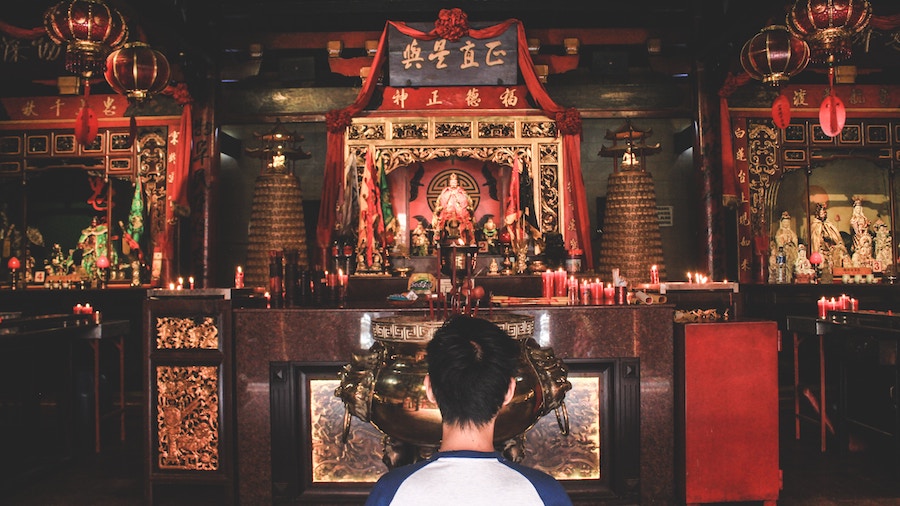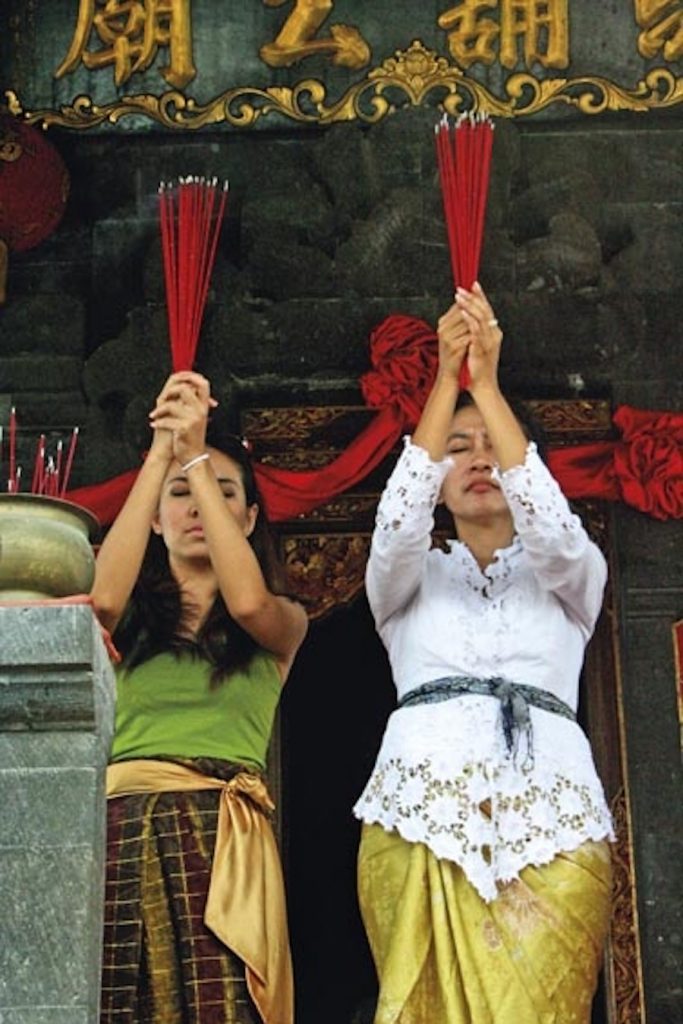Identity, especially in a country as large and diverse as Indonesia, can be a confusing and somewhat muddled topic. For centuries, the Indonesian archipelago has been subject to the mixing of cultures, religions races, ethnicities and so on, resulting in the ‘Indonesian people’ of today. However, it is perhaps Chinese Indonesian identity that stands out the most from a population of majority Austronesian-Malays. Historian Jean Couteau, through the following story, depicts the very issues and problems surrounding identity, focusing on Chinese-Indonesian identity in the vast archipelago.

Let me tell you a story about the Chinese. No, it won’t be of Chinese dragons or emperors, of horoscopes and mythology. This is a modern story about Indonesia today and the mixed perceptions of Sino-Indonesian (Chinese-Indonesian) people and the complexities of identity. This is a story about my friend.
“Her legs were smooth and white. She was wearing a tight tweed jacket, walked with elegance, with a sense of importance as much as purpose, and had an aloof way of looking at things with her beautiful eyes and well-drawn lips which, to me, were alluring. Her whole behavior betrayed the presumed arrogance of the well-born and well-educated Chinese. I was a writer and she was an executive and main-shareholder of a large Surabaya textile company, although she spoke English better than me. She was an impressive and successful woman to say the least. But, she was in my car and I had enough self-confidence to think that the meager condition of my writer’s bank account would not be a hurdle in my ‘seducing’ her. I had decided to take her around the island, in hope that her corporate life would see me as ‘adventure’. I would not get a second opportunity of the kind. It was to be now or never.
I was tired of driving. So stopped at the sort of haunt that village folks call a restaurant, but which city people call a food-stall. I hesitated to enter, but not for long. The place had to me the right “feel”, at least to the standard of my nose. Since romance was in the air between me, the writer, and her, the manager, I was sure it would do, or so I thought. It would be a good change after the restaurants my friend was obviously used to. It would work, I told myself.

But damn! My choice of eatery would be my demise; I knew the lady inside, or rather she knew me. Dark-skinned, plump and friendly, she had a broad, natural and innocent smile, of the kind one still sees on the remote roads of Bali. She was the restaurant owner, a friendly face I had known back from my old days in Batu Utuh. Before I could utter a word, there she was, blurting loudly in Balinese: “Pak Kadek! Dije maan cewek Jepang ane jegeg nenenan?” (Mr Kadek – my Balinese name — where did you get that pretty Japanese girl?”)
Unexpectedly, the unknown language had awakened the tigress’ soul in my manager friend: “What does that brash Balinese lady want?” she growled to me, deliberately in English, to show her “difference”, clenching her jaw slightly.
“She is not Balinese as you think, Pinky,” I replied to my hopeful romance, “but Chinese, or at least classified as such. Her name is even Mrs Oei, a pure Chinese name! But do you know what she asked me? She asked me where I got “this pretty Japanese girl”. Isn’t it funny? You, Pinky Sutomo, a full-blooded Chinese-Indonesian woman with an Indonesian indigenous name, speaking English and mistaken for Japanese! Whilst at the same time, you see Mrs Oei as being a fully Balinese woman despite having Chinese descent and a more Chinese name… Two Sino-Indonesian women unable to recognize each other as such.” I burst into laughter, recognizing the irony of the situation.
But, she did not smile. She did not grasp the irony of the situation, or perhaps did not want to. “To me, that lady is not Chinese at all,” she said, looking at Mrs Oei, who was busy wafting Balinese offerings at the other corner of the restaurant.
“She is certainly no full-blooded Chinese”, I replied. “You know these, Sino-Balinese, they often have an ancestral shrine for their ancestors on their mother’s side, and they make regular daily Balinese offerings. So they are Balinese in many ways, but they are Chinese on the father’s side, and hence by name. Well, she won’t be mistaken for Japanese like you, at least!” I joked, again.
The more sarcasm I added to the irony, the more Pinky was becoming irritated – and the more the potential romance faded. “She is certainly not Chinese to me,” she said. She was referring to the state of Mrs. Oei’s life, and her clear connection to Balinese Hinduism. The narrow-mindedness was too much for me. So I replied, “And you, are you “Chinese”? You speak English all the time, no Mandarin and certainly never any Indonesian either. So can you blame Mrs. Oei for mistaking you for a Japanese? If both of you Chinese Indonesian women are unable to recognize one another as such, this means there is a problem.”
Then I paused and thought again, “Or, on a positive slant, there is no problem. It is precisely because of this situation that you are both simply Indonesian, Pinky. Discarding any prejudices of face, class and especially full-bloodedness.”
She bit her lips, in anger. We were definitely not on the same wavelength. It is then that I understood that Pinky had an identity problem that blinded her. To her, “Chinese” was paler-skinned, rich and speaking English, in short, associated to the foreign world. They are not like Mrs Oei. They are not poorer, Hindu-following food-stall owners.”
I was disappointed, there was a clear failure to accept a national identity; class had been intertwined with ethnic prejudices on one side, and skin colour had determined identity on the other. Needless to say, the romance had grown thin, on both ends. I forgot my initial interests in her beauty and elegance altogether and took her back to her hotel without many words being exchanged.
Last time I heard of Pinky, she had moved to the United States. She was organising a Balinese dance festival and collecting Javanese puppets. She had at last become Indonesian, showing pride in her country, it only took emigration for her to realise it.









